#���Beltane fire festival
Explore tagged Tumblr posts
Text
Blackcrowing's Irish Pagan Festivals Master Post
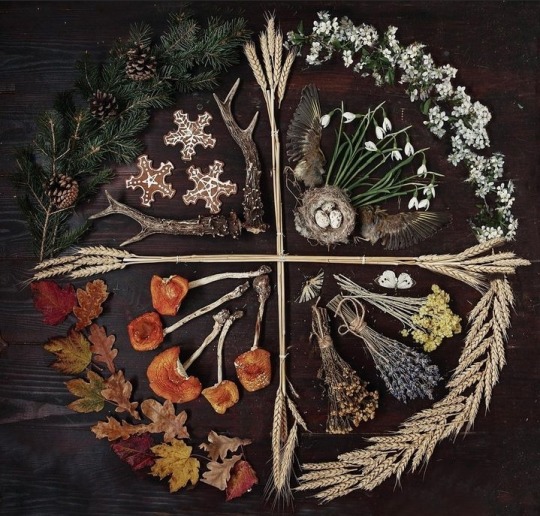
Samhain Festival
Samhain Authentic Foods
Imbolg Festival
Imbolg Authentic Foods
Bealtine Festival
Bealtine Authentic Foods
Lughnasadh Festival
Lughnasadh Authentic Foods
When is the 'New Year'?
My kofi
Art Credit - Familiar_flower
#lughnasa#lúnasa#lughnasadh#bealtaine#Baltaine#Beltane#imbolg#imbolc#fire festivals#fire festival#irish#irish mythology#irish polytheist#irish polytheism#irish pagan#irish paganism#irish reconstructionism#irish reconstructionist#celtic#celtic mythology#celtic pagan#celtic paganism#celtic polytheist#celtic polytheism#celtic reconstructionist#celtic reconstructionism#blackcrowing#samhain#pagan#paganism
352 notes
·
View notes
Text
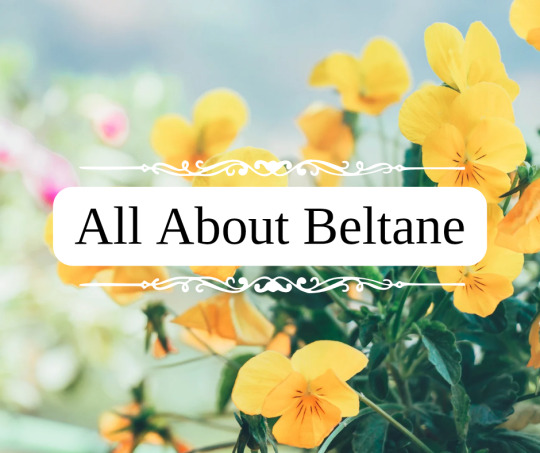
All About Beltane
Beltane, also known as Bealtaine in Irish, is a Gaelic holiday traditionally held on May 1st or the halfway point between the spring equinox and the summer solstice. It is believed to be named after the Celtic sun god Belenus. It was widely observed in Ireland, Scotland, and the Isle Of Man, and is one of the 4 major Celtic fire festivals. It is mentioned in even the earliest Irish literature and marked the beginning of summer and used as the marker to drive cattle into their summer pastures. Although public celebrations have mostly fallen out after the 20th century and many traditions have been mixed with other cultural holidays (such as the Roman holiday May Day), many Celtic Neopagans and Wiccans still celebrate, and many local traditions still continue, causing it to now get a cultural revival.
Traditionally, rituals were held to protect the livestock that moved pastures, along with crops, dairy products, and people, and to encourage growth. It was also important to appease the Aos Sí, or nature spirits/fairies, which were believed to be more active then.
According to early medieval texts in 908, druids would make two bonfires and drive cattle between them to protect them from disease. In the 18th and 19th centuries, bonfires continued to be an important part of the celebrations. Before the bonfires were lit, all hearth fires were put out, and then relit using the fire from the Beltane bonfires after the celebration.
Continuing into the 19th century, cattle were still driven over or between flames, or sometimes around the fires or made to leap over. The people themselves did as well for good luck and protection. Once the fires died down, people would dab themselves with the ashes and sprinkle them over their crops and livestock. Torches from the bonfires would also be brought home and carried around the home or boundaries, and also used to relight the hearth.
Food was also an important part of the Beltane festival, and usually included a feast of lamb, which, historically, was sacrificed. In 1769, it was written that a hot drink, called a caudle, made of eggs, butter, oatmeal, and milk was served, along with tossing a bit on the ground as an offering. A Beltane Bannock, a type of oatmeal cake, was also written to be important and had a few traditions around it.
In one tradition, the Beltane Bannock had nine knobs on it and each person would take the bannock and face the fire, proceeding to break off the knobs of bannock one at a time and tossing them behind their shoulder as an offering to the spirits for protection over their livestock and from predators (one for the cow, one for the sheep, one for the fox, etc). Afterwards, they would drink the caudle.
According to other 18th century writers, there was another Beltane Bannock tradition where the bannock would be cut into slices and one was marked with charcoal. The slices were then thrown into a bonnet and everyone would take one out while blindfolded. According to one writer, whoever pulled the marked bannock slice had to leap through the fire 3 times. According to another, the person would instead be pretend-thrown into the fire and for some time afterward people would talk about the person as if they were dead. This may have always been symbolic, or it may have been a tradition from a time where actual human sacrifice was used. This tradition was also near identical to May Day traditions that occurred in Wales and other parts of Europe, however.
Other traditions including flowers and plants were also observed, especially ones that evoked fire. Documents from the 19th century cite that yellow and white flowers, such as primrose, rowan, hawthorn, gorse, hazel, and marsh marigold was used and placed at doorways and windows. Sometimes they were strewn into garland, and other times they were made into bouquets, made into crosses, or fastened to them. They were also fastened to cows and milking/butter equipment.
Decorating a May Bush or May Bough was also a widespread tradition, and it usually consisted of a small tree or branch (typically hawthorn, rowan, holly, or sycamore) decorated with bright flowers, ribbons, candles, painted shells or egg shells from Easter, and more. In some traditions they also decorated it with gold and silver May Balls, which were hurling balls, that were then either given out to children or gifted to winners of a hurling match. It was also known as the only acceptable time to cut a thorn tree, as they were associated with fairies and may have also been a relic of worshipping tree spirits. It would either be decorated where it grew, or branches hung over windows, doors, roofs, and barns either inside or outside. Traditionally, it was the responsibility of the eldest of the house to decorate it.
The tree was usually left up until May 31st, but in some traditions it would be burned in the festival bonfire after singing and dancing around it. In Dublin and Belfast, May Bushes were brought into town and decorated by the whole neighborhood, with each neighborhood competing for the most beautiful bush. These competitions could also lead to neighborhoods attempting to steal others May Bushes, which eventually led to the May Bush being outlawed in Victorian times.
Appeasing the fairies was also a big part in Beltane celebrations, with many traditions revolving around offerings to the fairies and also warding them off, as there were many fears around them stealing dairy. One protection tradition was to leave 3 black coals under the butter churn. Another was to hang May Boughs on the milk pails. And yet another was to hang cattle tails in the barns. Flowers were also used to decorate the cattle's horns for good luck.
Farmers would also lead a procession around the boundaries of the farm and would "carry with them seeds of grain, implements of husbandry, the first well water, and the herb vervain (or rowan)", stopping at the four cardinal points of direction starting at the east, and performing rituals towards each direction at each stop. These processions were said to bring protection of their farm produce and encourage fertility. Some people also made the sign of the cross using milk on the backside of cattle for good luck.
As for fairy offerings, one tradition was to pour milk or leave food at places associated with the fairies such as "fairy trees". In Ireland, cattle were brought to "fairy forts" where a small amount of their blood was poured into the earth with prayers of the herd's safety. Sometimes, the blood would be left to dry and then be burnt.
Visiting holy wells was also a popular way to celebrate Beltane. Visitors would walk sunwise, moving from east to west, around the well while praying for health. They would then leave offerings of coins or cloth. The first water drawn from the well on Beltane was thought to be especially potent, and would bring good luck to the person who drew it.
Morning dew on Beltane was also thought to bring goodluck and health, and maidens would wash their face with it or roll in it at dawn or before sunrise on Beltane. It was also collected in a jar, left in sunlight, and then filtered. The dew was said to increase sexual attractiveness, maintain youthfulness, protect from sun damage, and ensure skin health during the ensuing year.
Modern day celebrations may vary from these more traditional festival activities, but many choose to incorporate or take inspiration from the traditions at least. Popular traditions still revolve around bonfires, feasts, decorating a May Bush, and focusing on protection and growth.
Beltane Associations
Colors - yellow, white, red, green
Food - lamb, milk and dairy, beef, bannocks, caudle, cakes
Animals - cattle, sheep, other herd animals
Items - primrose, rowan, hawthorn, gorse, hazel, marsh marigold, holly, sycamore, yellow and white flowers, flower garland, greenery, morning dew, dairy products
Crystals - citrine, fire agate, fire opal, carnelian, red and yellow jasper
Other - protection, fertility, good luck, fire, smoke, ash, sun, bonfires, farming
Ways To Celebrate
light a bonfire
jump over or dance around a bonfire
decorate a May Bush or May Bough
craft and hang flower garland
bake Beltane Bannocks
collect morning dew
create some caudle
ward and protect your home or property
leave offerings for the fairies
focus on protection, growth, and luck magic
enjoy time in the sun
have a feast
create a bouquet out of yellow and white flowers
visit a farm or petting zoo
#beltane#beltaine#bealtaine#celtic#gaelic#irish#scottish#pagan#witch#witchy#wicca#may day#magick#magic#magickal#grimoire#tradition#celebrate#bonfire#fire festival#witchcraft#spiritual#witchblr#witch community#paganism#pagan witch#celtic paganism#paganblr#about#dairy
99 notes
·
View notes
Text
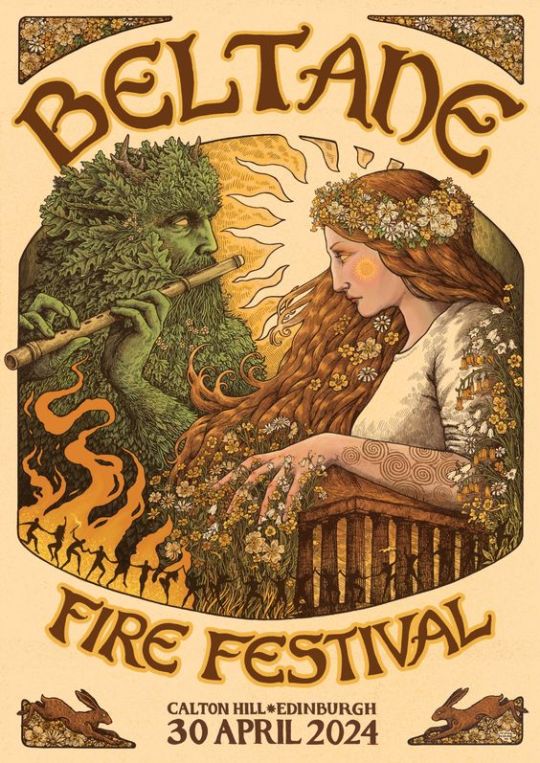
via
57 notes
·
View notes
Text
How to Celebrate Beltane Discreetly
Just a list of some ideas from someone who's been discreetly celebrating pagan/witchy holidays for about four? Five? Years on and off.
I don't practice all of my suggestions because I live in a strict home, but I did try and include some ideas that are do-able in more lenient living situations.
Please reblog and add any suggestions that I didn't think of!
Wear firey/bright colors to emulate Beltane's fire festival properties.
Create a Poem or two in honor of Brigid
Listen to music with "poetic" vibes or "fiery" vibes
If you're able to-- light some candles or burn incense. Battery operated candles can also be a perfect substitution!
Cook a nice stove-top meal (the flames of the stove can symbolize the flames of Beltane).
If you can't use a stove but like spicy food, maybe try and get some spicy treats and treat the heat of the spice as being symbolic of Beltane's flames!
Meditate to the sound of crackling flames. Or just meditate in general!
They say the veil between worlds is thinnest on both Beltane and Samhain... Sooo I like to wear a head covering when I go out (and it can be as simple as a bandana or a headband!)
I also like to sit and listen to windchimes, ring bells, and admire my suncatcher because they capture the "otherworldly" vibes Beltane can bring!
If you can, have a bonfire! You can always invite friends/family and have a party but use the time to secretly admire the flames.
I am an absolute weirdo so one of my favorite nighttime activities in place of a bonfire is to sit in my pitch-black room at night and chant some of the poems I made earlier in the day!
Don't feel bad if you can't do any of them for any reason. What really matters is you're here and doing your best to carry on <33
Blessed Beltane!
#beltane#happy beltane!#paganism#pagan#paganblr#pagans of tumblr#celtic pagan#witchcraft#witchblr#witch#witchy#celtic paganism#witches of tumblr#closeted pagan#closeted witch#pagan worship#fire festival
52 notes
·
View notes
Text
BELTANE
May Day / Fire Festival

When is Beltane?
It is celebrated on the first day of May, marking the near-beginning of summertime. May 1st is roughly the halfway point between the spring equinox and the summer solstice.
What does Beltane mean?
"Beltane" can be inferred as the Gaelic word for "bright fire." It signifies that the days are growing longer and warmer, and welcomes fertility, life, and love. The veil between the human world and the spirit world has become thin, connecting us to fairies, nature spirits, and the dead.
Who does Beltane celebrate?
One may worship any fertility deity on Beltane, including Cernunnos, the Celtic God of vegetation, fauna, and fertility; Flora, the Roman Goddess of flowers, fertility, and springtime; and Belenus, the Celtic God of the sun, fire, and healing.
----------
BELTANE TRADITIONS
Work with stones that activate the heart and spirit, including rhodonite, rhodochrosite, rose quartz, emerald, and jade.
Use fresh, sweet-smelling flowers and herbs like roses, dandelions, lavender, mugwort, woodruff, and spearmint, all in which promote solace, pain relief, self-love, and spiritual healing. Mugwort may be beneficial to relieving colic and pain during mensuration.
Prepare and consume meals with honey, mint, and lemon, each considered aphrodisiacs. This mix of sweet and refreshing marks the revival of flora and fauna in the warming months. These three ingredients are also relatively hardy and are available year-round, symbolizing vitality and spirit.
Decorate and adorn yourself with soft pinks, greens, whites, and yellows.
Incorporate animal imagery (e.g., figurines, photographs, drawings, et cetera) of birds, cattle, stags, and other creatures associated with crop, fertility and strength.
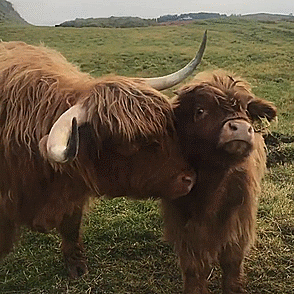
BELTANE ACTIVITIES
Create and/or wear a flower crown. Use seasonal flowers--especially white, yellow, and orange flowers to represent fire--and decorate your hair with them!
Take a ritual bath: add lavender, coarse salts, mint, and rose petals to your relaxing bath.
Light a fire. Safely light a bonfire and indulge as you would like: sit and chat by the fire, feast over it, or safely dance around it. You could also take a blank sheet a paper, write down one thing you would like to achieve in the year to come, and then toss it into the flames.
Dance around the Maypole. The maypole is a ceremonial folk dance performed to ensure fertility and union. People dance around a tall wooden maypole and weave colored ribbons by walking in a circle in opposite directions from each other.
youtube
Make a Beltane altar. In the center of the altar, add an image/icon of a fertility god(dess) of your choice, and decorate around it with seasonal flowers, bells, burning candles, soft colors, and sugar or honey.
Get creative with recipes! Carlota Santos, who is the author of Magika, recommends drinking freshly made lemonade and baking buttery sugar cookies!
Carlota Santos’ Beltane Cookie Recipe

#I cannot believe that it is already May#witchblr#witchcraft#beltane#celtic paganism#may day#maypole#fire festival#Belenus#God of sun and fire#Youtube
44 notes
·
View notes
Text
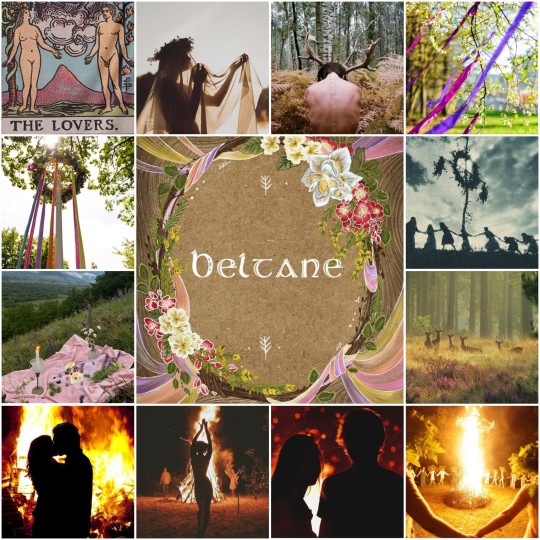
Blessed Beltane 🏵️🌱🌼
#beltane#may day#pagan#wicca#wiccan#first of may#may first#witch#witchcraft#witchy#pagan holiday#fire festival#sabbat#sabbats#spell#spell work#divination#tarot#spring#summer#the goddess#the horned god#fertility#fertility festival#moodboard#witchy moodboard#wheel of the year
45 notes
·
View notes
Text
Beltane Activities List:
(These are the things I’ll be doing on May 1st, these are simply ideas, obviously adapt them to your craft and belief system)
🌼Buy some fresh yellow flowers
🌼Play my Beltane playlist
🌼Research Fairies
🌼 Go Outside and meditate
🌼Wear Ribbons or flowers in my hair
🌼Light a candle
🌼Put a log on the fireplace
🌼Do some flower picking (With Jörd’s permission)
🌼Eat fresh fruit like strawberries
🌼Dance to music (like my playlist or this YouTube video that I link here) https://youtu.be/JjbV0wvGVDA
youtube
🌼Have my study ambience be the dead of night’s Beltane ambience altar (linked) https://youtu.be/Q18JUCVWOV8
youtube
🌼Take a ritual shower
🌼Do a meditation that is specifically for Beltane
🌼Do divination using a Beltane spread
🌼Display a Beltane vibes Oracle or tarot card on your altar
🌼Be childlike and enjoy everything!
🌼Work with stones like
-Carnelian for enjoyment & creativity
-Citrine for sunshine positivity
-Garnet for love and grounded abundance
-Staurolite for working with the faeries or Alfr as well as lucky attributes
-Unakite for connecting with nature spirits and the energy of spring
🌼Drink lemon water!
🌼Make art inspired by this pagan festival (draw faeries, flowers, bonfires, maypoles, etc)
🌼Have chamomile tea with honey before bed!
That’s it! 🌱🌼🌾🔥
#beltaine#beltane#Beltane ideas#pagan#witchcraft#witch#witchblr#witchy#wiccan sabbat#eclectic pagan#paganism#fire festival#festival#faerie#spirituality#ideas#Youtube#velvetrosewitchery
208 notes
·
View notes
Text
April 2024
SW7 Spellcasting Calendar.
April 2024
Day of Empowerment - 4.06.24
SOLAR ECLIPSE - 4.08.24
New Moon - 4.08.24
Angel Summit - 4.13.24
Earth Day - 4.22.24
Lyrid meteors - 4.(22 & 23).24
Full Moon - 4.23.24
Night of the Witches - 4.30.24
All Spellcasting Events
#Magic#Spells#Lyrid meteor shower#Angels#Angel magic#Angel spells#New Moon#New Moon spells#Full Moon#spells for Full Moon#Meteor Shower spells#Meteor Shower magic#easter#easter sunday#spells for easter#Easter#Earth Day#spells for Earth Day#Night of the Witches#solar eclipse#spells for solar eclipse#Beltane fire festival
12 notes
·
View notes
Text
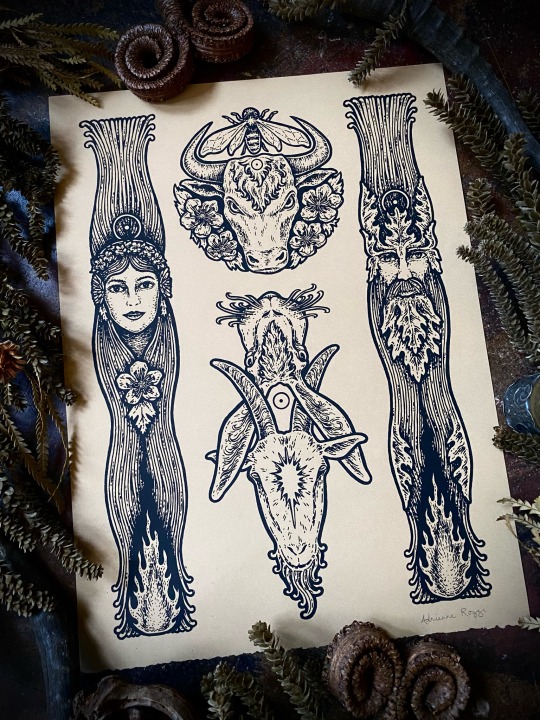
Here’s the reveal of my newest, freshly printed screen print: ‘The Flames of Beltane.’ 🔥 In the agricultural Celtic societies that shaped Beltane, one big tradition of the fire festival was to create two bonfires and walk livestock between them in an act of purifying, protecting, and blessing the animals with fertility in preparation for a bountiful growing season. In The Flames of Beltane, two bonfires burn below The May Queen and The Green Man, their smoke rising to give life to both figures. Betwixt the bonfires are some of the animals celebrated around this time for their fertility and life-giving symbolism��� The bee, the bull, the hare, and the goat. All are blessed with purification, fertility, and protection by the glow of the fire flames. 🔥 This print will be available in limited quantities tomorrow, 4/21 @ 6pm ET!
Poison Apple Printshop
#poisonappleprintshop#beltane#beltaine#artwork#celtic#pagan#may queen#witchy#green man#Taurus#hawthorn#witch#art#screen print#engraving style#fire festival
82 notes
·
View notes
Text
Blessed Beltane to everyone that celebrates, and also to those that don’t but still deserve the love 💛
#Beltane#Beltane 2024#blessings are abundant#the haar has covered my city but the fire festival went well last night#and there will be people up the mountain today celebrating
7 notes
·
View notes
Text
Important Facts about Bealtaine from an Irish Celtic Reconstructionist
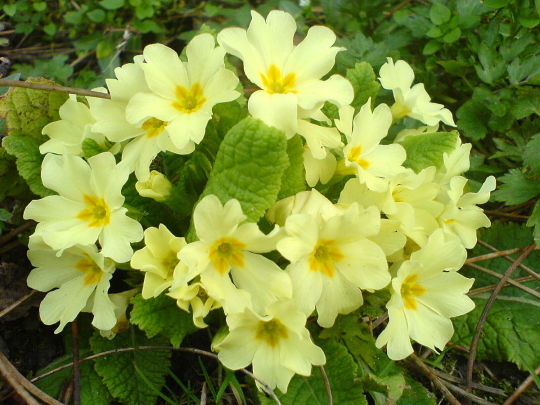
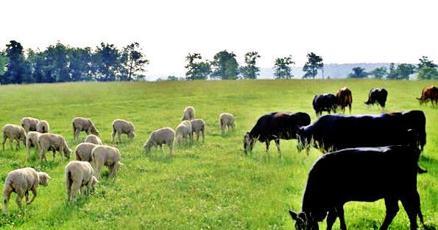
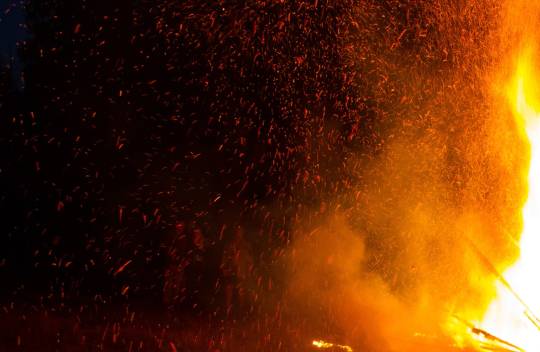

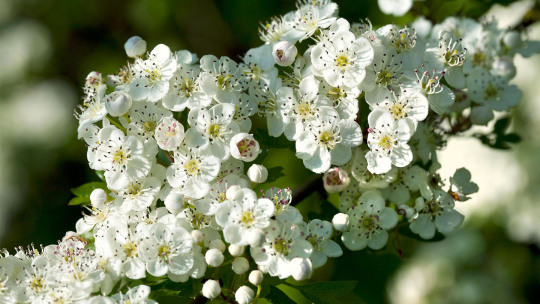
Spelling and Pronunciation
OI. Bealtaine (Bell-tin-Na) has more recently been written as I. Beltaine or Anglicized Beltane (Bell-tain). In the Cormac Glossary it is said to derive from the deity Bel and OI. 'Tene' meaning fire.
Dates
Most Reconstructionists celebrate Bealtaine on April 30th-May 1st, sundown to sundown. Iron age Irish (and other Celts) structured their days from sunset to sunset so while we now track this time as stretching over two days, they would have seen this period as one single day, being the first day of the month of May by the Gregorian calendar. Some Reconsructionists might prefer to celebrate by the Julian calendar which would place this holiday on May 13th-14th (by the Gregorian calendar), still of course from sundown to sundown. In the most traditional sense this holiday would have been celebrated when the livestock was moved from the winter grazing fields out to the summer grazing fields.
Importance in Mythos
Most mythological reference to this holiday comes in the form of the movement of peoples or invasions of peoples.
The mythological invasion of Partholon and his people occurred on Bealtaine and the plague that wiped them out also began on that date and lasted a week. The Tuath De Danann are said to have arrived on the island on Bealtine as well and lastly the Sons of Mil are said to have invaded on this date also (Macalister, 1940).
In later times when Christianity had made its mythologies the way of the land and the old deities were moved to the status of Fae this idea of movement and invasion seems to have persisted. Traditions hold that this date is a dangerous time for mortals as the aes sídhe are moving amongst the daoine sí and may stop by unsuspecting homes to ask for butter or perhaps some water, but if this request is granted they will steal the homes luck for the year.
I will make a note here that while the Cormac Glossary notes the deity Bel there is no Celtic/Gaelic deity of this name (though there is a Mesopotamian one) and this seems to cause a lot of confusion, especially when it comes to Wiccancentic ideas and articles. Cormac was likely referring to the Celtic/Gaelic deity Belenus NOT the Mesopotamian Bel. Belenus/Belenos was associated with the sun and healing and during the Gallo-Roman period was often noted to be the Gaelic Apollo. There is evidence to suggest that Belenus/Belenos was known throughout the Celtic/Gaelic world, though we don't have any specific information about how prominently he was worshiped in Ireland itself it is relatively safe to assume that the Iron age Irish would have known who he was.
Celebration Traditions
Like on Samhain, at the opposing 'end' of the year livestock were transitioned from one grazing area to another. While on Samhain, when the 'dark' half of the year begins and the livestock are moved in from summer grazing to winter grazing, Bealtaine is the opposite. It begins the 'light' half of the year and livestock are moved from the winter grazing out to the summer pastures. At both holidays to ensure healthy animals and protect them from any malicious factors great bonfires were built (most notably on the hill of Uisneach) and livestock would be driven between them.
There seems to be a traditional emphasis on the protection of homes, barns, livestock, peoples, and crops. Generally this seems to be a time when warding against ill luck for the community became a focus. Yellow, specifically yellow flowers (primrose, gorse or hawthorn blossoms), appear to have played a role in this as they have been used to decorate, but when exactly this tradition originated is unknown. The healing wells of Ireland and specifically the dew on the morning of Bealtaine have been thought to be important. Some traditions hold that the dew, when washed with will bring beauty, while others think if drank by the milk cows it would cause them to produce more, but again the origins of these traditions are relatively unknown.
Interesting History to take into Consideration
Given Bealtines long lasting history in Irish mythological tradition of being associated with mass movements of peoples and a need to protect ones family and community in this tumultuous time it is -possible- these ideas persist due to the movements (and possibly famines or plagues) during the "Megadrought" of the Bronze age (1250-1100 BCE). Most studies have focused on the effects of the Mediterranean at this time, but it is reasonable to assume the ripples of effects could have been felt strongly enough in Ireland to leave a lasting impression, especially since it is not outlandish to assume that people fleeing the Mediterranean area, which was no longer able to adequately sustain them, may have fled to the more temperate British Isles and passed on their trauma through oral tradition. This could possibly be backed up by looking at the etymology of 'Bel' not as referencing Beleus/Beleos but as referencing the Irish Balor (or perhaps they are different aspects of the same figure) who embodies not the life sustaining properties of the sun but the deadly and destructive ones. Balor balcbéimnech, 'Balor the strong smiter,' Balor birugerc, ' Balor of the piercing eye,' Balor mae Doit meic Néid, 'Balor son of Dot son of Néit.'
This is obviously only my personal opinion and can be taken or dismissed as one likes.
My Kofi
#celtic mythology#celtic reconstructionism#celtic paganism#celtic reconstructionist#celtic#Irish#irish mythology#irish reconstructionist#irish reconstructionism#irish paganism#beltaine#Bealtaine#Beltane#festival#fire festival#blackcrowing
267 notes
·
View notes
Text
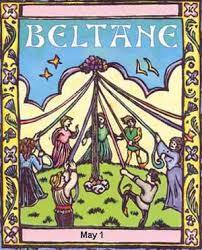
Good morning and happy Beltane ( Latha Buidhe Bealltainn ) from here in Scotland. To all my family and friends near and far who'll be celebrating today, have a blessed day. 🏴
#beltane#blessed day#blessed beltane#1st of May#scotland#scottish#festival#fire festival#celebrate#🏴
8 notes
·
View notes
Photo
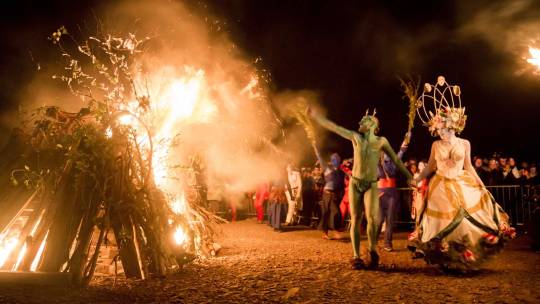
Wishing All A Joyous, Ecstatic Beltaine/Beltane May Queen & Green Man at the Beltane Fire Festival, Edinburgh.
[Guillaume Gris]
* * * *
Words of wisdom from an urban fifth grader: my heart, the universe my mind, the stars my soul, the sun my blood, the moon my bones, the world my skin, the ocean my heart, the universe ~ from J. Ruth Gendler’s book: Notes on the Need for Beauty
[Life As An Oracle: Interpreting Signs and Symbols]
#Beltane#Beltane Fire Festival#Edinburgh#Guilaume Gris#May First#seasons#J. Ruth Gendler#Notes On the Need For Beauty#poem#poetry
31 notes
·
View notes



